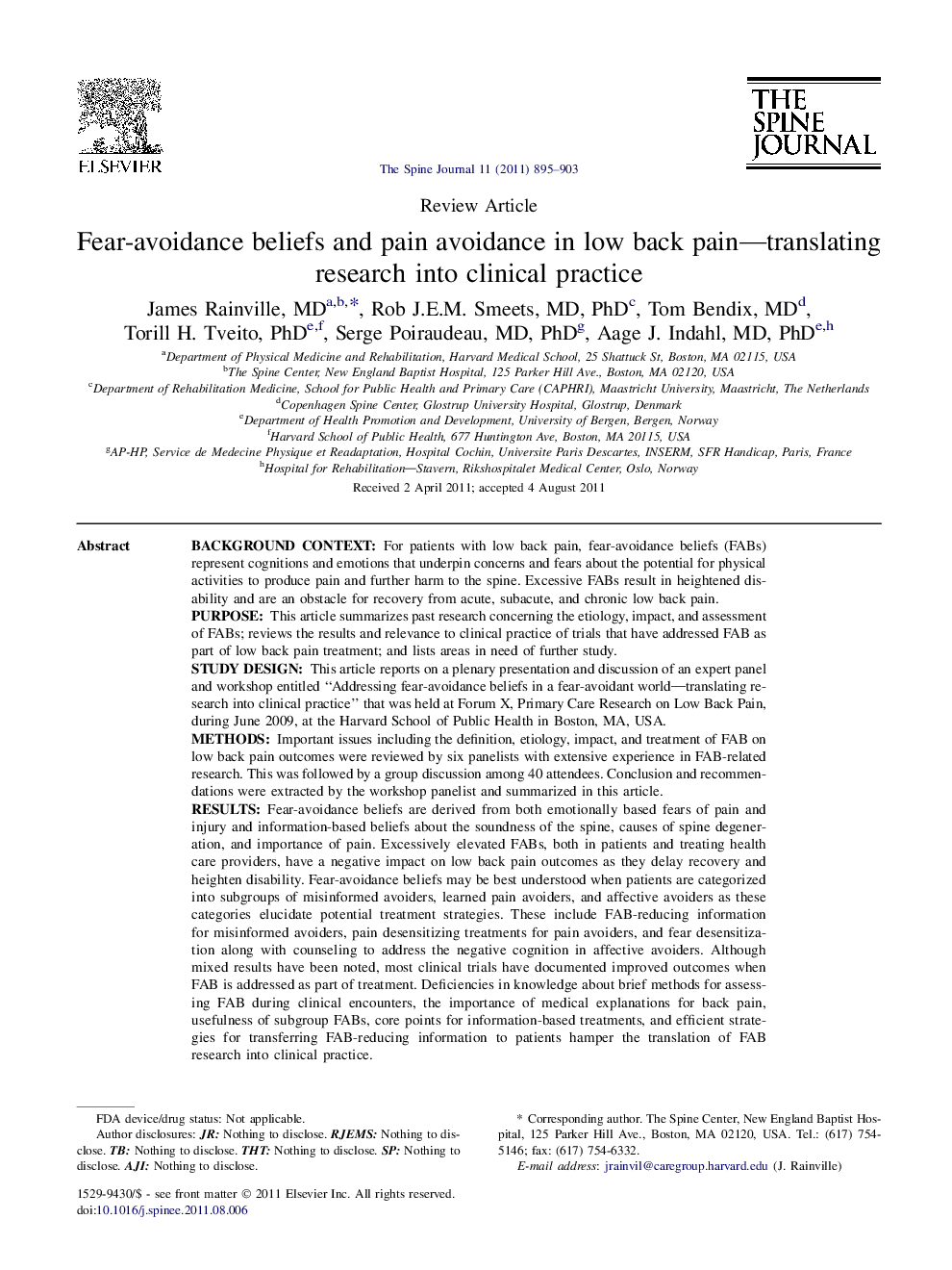| کد مقاله | کد نشریه | سال انتشار | مقاله انگلیسی | نسخه تمام متن |
|---|---|---|---|---|
| 4098942 | 1268627 | 2011 | 9 صفحه PDF | دانلود رایگان |

Background contextFor patients with low back pain, fear-avoidance beliefs (FABs) represent cognitions and emotions that underpin concerns and fears about the potential for physical activities to produce pain and further harm to the spine. Excessive FABs result in heightened disability and are an obstacle for recovery from acute, subacute, and chronic low back pain.PurposeThis article summarizes past research concerning the etiology, impact, and assessment of FABs; reviews the results and relevance to clinical practice of trials that have addressed FAB as part of low back pain treatment; and lists areas in need of further study.Study designThis article reports on a plenary presentation and discussion of an expert panel and workshop entitled “Addressing fear-avoidance beliefs in a fear-avoidant world—translating research into clinical practice” that was held at Forum X, Primary Care Research on Low Back Pain, during June 2009, at the Harvard School of Public Health in Boston, MA, USA.MethodsImportant issues including the definition, etiology, impact, and treatment of FAB on low back pain outcomes were reviewed by six panelists with extensive experience in FAB-related research. This was followed by a group discussion among 40 attendees. Conclusion and recommendations were extracted by the workshop panelist and summarized in this article.ResultsFear-avoidance beliefs are derived from both emotionally based fears of pain and injury and information-based beliefs about the soundness of the spine, causes of spine degeneration, and importance of pain. Excessively elevated FABs, both in patients and treating health care providers, have a negative impact on low back pain outcomes as they delay recovery and heighten disability. Fear-avoidance beliefs may be best understood when patients are categorized into subgroups of misinformed avoiders, learned pain avoiders, and affective avoiders as these categories elucidate potential treatment strategies. These include FAB-reducing information for misinformed avoiders, pain desensitizing treatments for pain avoiders, and fear desensitization along with counseling to address the negative cognition in affective avoiders. Although mixed results have been noted, most clinical trials have documented improved outcomes when FAB is addressed as part of treatment. Deficiencies in knowledge about brief methods for assessing FAB during clinical encounters, the importance of medical explanations for back pain, usefulness of subgroup FABs, core points for information-based treatments, and efficient strategies for transferring FAB-reducing information to patients hamper the translation of FAB research into clinical practice.ConclusionsBy incorporating an understanding of FAB, clinicians may enhance their ability to assess the predicaments of their patients with low back pain and gain insight into potential value of corrective information that lessen fears and concerns on well-being of their patients.
Journal: The Spine Journal - Volume 11, Issue 9, September 2011, Pages 895–903